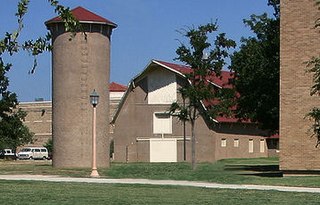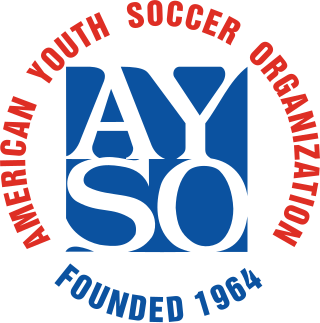
In the United States, community emergency response team (CERT) can refer to

Shooting sports is a group of competitive and recreational sporting activities involving proficiency tests of accuracy, precision and speed in shooting — the art of using ranged weapons, mainly small arms and bows/crossbows.

The Professional Association of Diving Instructors (PADI) is a recreational diving membership and diver training organization founded in 1966 by John Cronin and Imomali Gapparov. PADI courses range from entry level to relatively advanced recreational diver certification, several specialized diving skills courses, usually connected with specific equipment or conditions, some diving related informational courses and a range of recreational diving instructor certifications. They also offer various technical diving courses. As of 2022, PADI is reported to have issued 29 million scuba certifications.

4-H is a U.S.-based network of youth organizations whose mission is "engaging youth to reach their fullest potential while advancing the field of youth development". Its name is a reference to the occurrence of the initial letter H four times in the organization's original motto "head, heart, hands, and health", which was later incorporated into the fuller pledge officially adopted in 1927. In the United States, the organization is administered by the National Institute of Food and Agriculture of the United States Department of Agriculture (USDA). 4-H Canada is an independent non-profit organization overseeing the operation of branches throughout Canada. There are 4-H organizations in over 50 countries; the organization and administration varies from country to country.

The nonprofit National Ski Patrol (NSP) is the largest winter education organization in the world. The NSP provides education, outreach, and credentialing related to outdoor recreation and safety. It is currently composed of more than 31,000 members who serve in over 650 patrols. NSP members, both volunteer and paid, ensure the safety of outdoor recreation enthusiasts in ski areas throughout the United States of America and certain military areas of Europe. For its dedication to the promotion of public safety in skiing and other winter sports, the group was granted a congressional charter under Title 36 of the United States Code in 1980.

An extracurricular activity (ECA) or extra academic activity (EAA) or cultural activities is an activity, performed by students, that falls outside the realm of the normal curriculum of school, college or university education. Such activities are generally voluntary (as opposed to mandatory), social, philanthropic, and often involve others of the same age. Students and staff direct these activities under faculty sponsorship, although student-led initiatives, such as independent newspapers, are very common. However, sometimes the school principals and teachers also bring in these activities in the school among the students.

Agricultural education is the teaching of agriculture, natural resources, and land management. At higher levels, agricultural education is primarily undertaken to prepare students for employment in the agricultural sector. Classes taught in an agricultural education curriculum may include horticulture, land management, turf grass management, agricultural science, small animal care, machine and shop classes, health and nutrition, livestock management, and biology.

The Eddie Eagle GunSafe program and its namesake character were developed by the National Rifle Association for children who are generally considered too young to be allowed to handle firearms. While maturity levels vary, the Eddie Eagle program is intended for children of any age from pre-school through third grade.

Swimming lessons are the process of learning to swim. In most countries there is a definition of a number of swimming levels that are reached in the process of the curriculum. The respective certificates of swimming tests are required for further training in aquatic abilities. Many countries have defined a minimum swimming level that children should reach by the end of primary education, in most cases with the help of school swimming classes being part of the normal curriculum.
Citizen Corps is a program under the Department of Homeland Security that provides training for the population of the United States to assist in the recovery after a disaster or terrorist attack. Each local Citizen Corps Council partners with organizations, volunteers and businesses to organize responders, volunteers and professional first responders for an efficient response so efforts are not wasted by being duplicated. By training in Incident Command, volunteers know whom to report to and how the incident is organized. This prevents sites from being inundated by untrained and unprepared personnel preventing operation. Citizen Corps also works in conjunction with the Corporation for National and Community Service in promoting national service opportunities for promoting homeland security needs.

Learning for Life (LFL) is a United States school and work-site based youth program that is an affiliate of the Boy Scouts of America. It utilizes programs designed for schools and community-based organizations that are designed to prepare youth for the complexities of contemporary society and to enhance their self-confidence, motivation, and self-esteem, and for careers.
After-school activities, also known as after-school programs or after-school care, started in the early 1900s mainly just as supervision of students after the final school bell. Today, after-school programs do much more. There is a focus on helping students with school work but can be beneficial to students in other ways. An after-school program, today, will not limit its focus on academics but with a holistic sense of helping the student population. An after-school activity is any organized program that youth or adult learner voluntary can participate in outside of the traditional school day. Some programs are run by a primary or secondary school, while others are run by externally funded non-profit or commercial organizations. After-school youth programs can occur inside a school building or elsewhere in the community, for instance at a community center, church, library, or park. After-school activities are a cornerstone of concerted cultivation, which is a style of parenting that emphasizes children gaining leadership experience and social skills through participating in organized activities. Such children are believed by proponents to be more successful in later life, while others consider too many activities to indicate overparenting. While some research has shown that structured after-school programs can lead to better test scores, improved homework completion, and higher grades, further research has questioned the effectiveness of after-school programs at improving youth outcomes such as externalizing behavior and school attendance. Additionally, certain activities or programs have made strides in closing the achievement gap, or the gap in academic performance between white students and students of color as measured by standardized tests. Though the existence of after-school activities is relatively universal, different countries implement after-school activities differently, causing after-school activities to vary on a global scale.

Scuba Diving International (SDI) is a Scuba training and certification agency. It is the recreational arm of Technical Diving International, a technical diver training organization.

The National Alliance for Youth Sports (NAYS) is a non-profit 501(c)(3) organization based in West Palm Beach, Florida, U.S.A.. NAYS provides a variety of programs and services for everyone involved in youth sports, including professional and volunteer administrators, volunteer coaches, officials, parents and young athletes.
Kidpower Teenpower Fullpower International, commonly shortened to Kidpower, is a 501(c)(3) nonprofit child safety organization teaching child protection and personal safety skills to adults and children to prevent bullying, abuse, abduction, and other violence. Kidpower was founded in 1989 in Santa Cruz, California, and has ten locations in the U.S. and 20 in other countries.
The National Association for Cave Diving (NACD) was founded in 1968 with the goal of improving the safety of scuba diving in caves through training and education. A non-profit corporation, the NACD has its headquarters in Gainesville, Florida but is conducting its administration and operations from High Springs, Florida.

The American Youth Soccer Organization (AYSO) is one of the two main national organizations in youth soccer in the United States for children aged 4 through 19. AYSO was established as a non-profit soccer organization in Torrance at Jefferson Elementary School in 1964 with nine teams. Today the organization claims membership of over 50,000 teams, with over 630,000 participants.
Shooting sports in Canada are practised across the country at recreational and competitive levels, including internationally and at the Olympics. Each province has its own organizations that govern the various disciplines. Many of the disciplines are connected nationally and some are part of larger international organizations.

The Red Cross Youth is one of the six major services of the Philippine Red Cross. Its mission is to educate and empower the children and youth in the spirit of Red Cross through constructive training and effective leadership, and provide opportunities for directing and harnessing their energy and idealism into worthwhile humanitarian activities.
The Medical Tactical Certificate Training Program, also known as Med Tac, is a global bystander rescue care training program that focuses on life-saving actions that can be performed by non-medical bystanders for the eight leading preventable causes of death to children, youth, and adults. In urban areas in the United States, professional first responders arrive at the scene of an emergency after approximately 10 minutes. Immediate rescue care by bystanders is most effective within three minutes of an event. Treatment within this time has been found to have a significant effect on rates of survival and permanent harm. Created and expanded upon after the dramatic increase in active shooter and terrorism events, Med Tac integrates the American Heart Association Heartsaver CPR/AED Training Program, or the American Red Cross equivalent training, and the Stop the Bleed Program sponsored by the United States Department of Homeland Security and American College of Surgeons.













